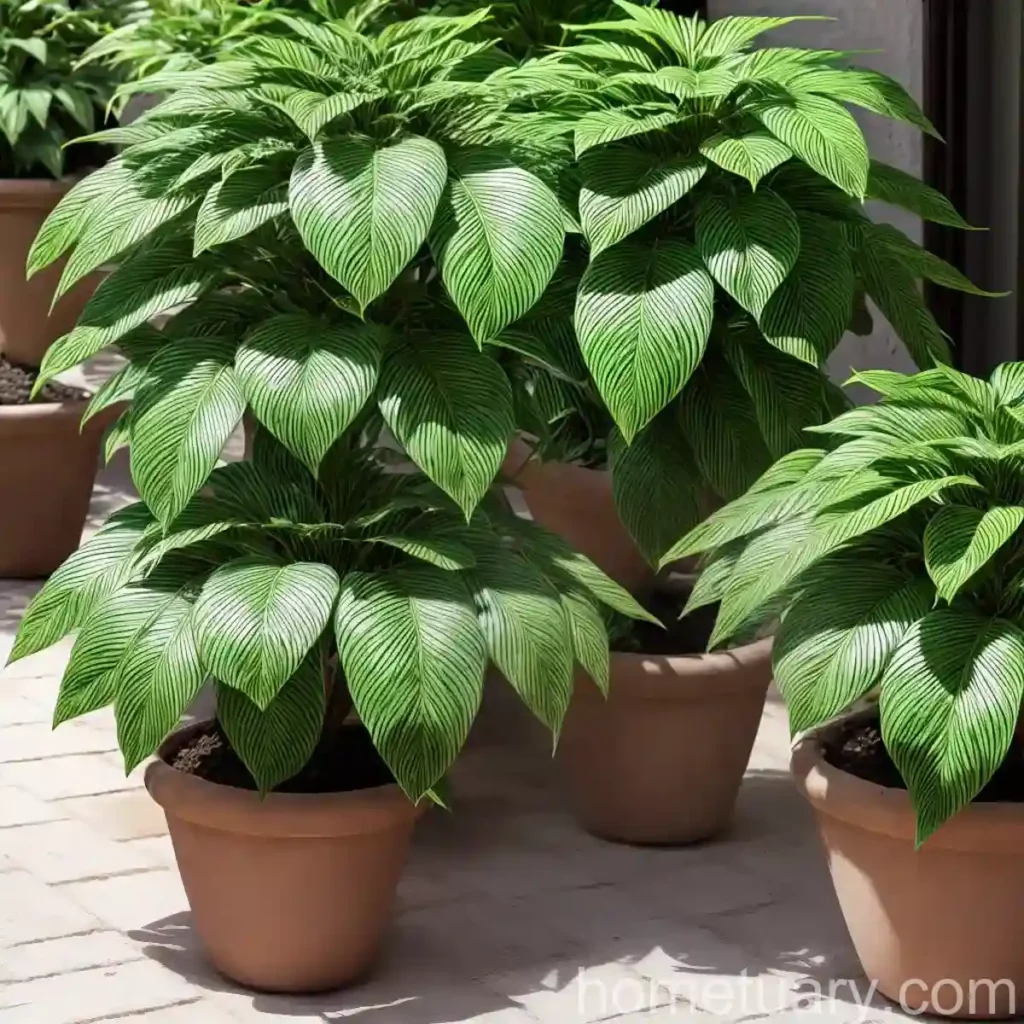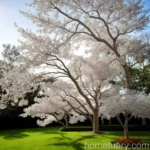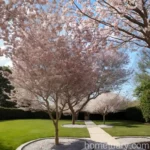Fontanesia (Fontanesia fortunei): A Comprehensive Guide
The world of plants is diverse and fascinating, with a myriad of species offering unique characteristics and benefits. Among the lesser-known but equally intriguing plants is Fontanesia fortunei, commonly known as Fontanesia. This beautiful shrub has gained attention for its striking features, cultural significance, and various uses in landscaping and horticulture.
In this comprehensive guide, we will delve into the world of Fontanesia fortunei, exploring its culture, uses, maintenance requirements, common diseases and pests, and much more. Whether you are a gardening enthusiast, a landscaping professional, or simply intrigued by the wonders of nature, this article aims to provide a wealth of information about this remarkable plant.
What is Fontanesia (Fontanesia fortunei)?
Fontanesia fortunei, commonly referred to as Fontanesia, is a deciduous shrub belonging to the Oleaceae family. This species is native to East Asia, including China and Japan, where it thrives in diverse habitats, ranging from woodlands to forest margins. The plant is named in honor of French botanist Marquis Jean Louis Auguste Lothar de Fontanes.
Fontanesia is renowned for its distinctive features, including attractive foliage, delicate flowers, and its adaptability to varying growing conditions. These attributes have made it a sought-after plant for landscaping and gardening purposes, contributing to its growing popularity in different parts of the world.
Key Takeaways – Fontanesia (Fontanesia fortunei)
Before delving into the specifics of Fontanesia’s culture, uses, and maintenance, let’s highlight some key takeaways about this remarkable plant:
- Fontanesia, also known as Fontanesia fortunei, is a deciduous shrub native to East Asia.
- It is esteemed for its ornamental value, including attractive foliage and delicate flowers.
- Fontanesia is versatile in its cultivation, adapting to various soil types and climatic conditions.
- The plant has diverse uses, ranging from landscaping and ornamental purposes to medicinal and environmental benefits.
- Understanding its maintenance requirements, common diseases, and pests is crucial for successful cultivation and preservation.
Now that we have a glimpse of Fontanesia’s significance and appeal, let’s unravel the intricacies of its culture and maintenance.
Culture
Cultivating Fontanesia requires an understanding of its environmental preferences, growth habits, and specific care routines. Whether you are considering introducing this plant to your garden or seeking to enhance its vitality in a natural setting, here are the essential aspects of Fontanesia’s culture:
Water
Fontanesia demonstrates moderate water needs, particularly during its establishment phase and prolonged dry spells. Adequate irrigation is crucial to support its growth and foliar health, especially in regions characterized by hot and arid conditions. However, as with many shrub species, it is imperative to avoid waterlogging, as excessive moisture can lead to root rot and other detrimental effects.
As a general guideline, Fontanesia should be watered deeply but infrequently. Deep watering promotes robust root development, helping the plant withstand periods of water scarcity. During periods of active growth and blooming, regular monitoring of soil moisture levels is recommended, adjusting the watering frequency based on environmental factors and the plant’s specific requirements.
Sunlight
Fontanesia is known for its versatility in sun exposure, displaying an adaptable nature to varying light conditions. While the plant thrives in full sun to partial shade, providing it with ample sunlight tends to enhance its overall vigor and flowering potential. In regions where intense sunlight is prevalent, partial shade during the hottest part of the day can offer protection against potential leaf scorch and stress.
When selecting a planting site for Fontanesia, consider the availability of sunlight throughout the day, taking into account any nearby structures or trees that may cast shade. In cooler climates, positioning the plant in a location that maximizes sun exposure can support robust growth and abundant flowering.
Fertilizer
Appropriate nutrition is pivotal to the healthy development and resilience of Fontanesia. A balanced and slow-release fertilizer, preferably formulated for shrubs and ornamental plants, can provide the essential nutrients needed for optimal growth and flowering. It is advisable to apply fertilizer during the early spring months, just before the onset of active growth, to fuel the plant’s vitality for the upcoming season.
When applying fertilizer, follow the manufacturer’s recommendations regarding the application rates and methods. Over-fertilization can have adverse effects on the plant, leading to excessive vegetative growth and potential imbalances in nutrient uptake. Additionally, incorporating organic matter into the soil, such as compost or well-decomposed manure, can contribute to the long-term fertility and structure of the growing medium.
Soil
Fontanesia exhibits adaptability to diverse soil types, thriving in well-draining loamy soils with a slightly acidic to neutral pH range. While it can tolerate various soil textures, ensuring adequate drainage is crucial to prevent water stagnation around the roots. Incorporating organic amendments into the soil, such as compost or peat moss, can improve its structure and moisture retention capacity, benefiting overall plant health.
Prior to planting Fontanesia, conducting a soil test can provide valuable insights into the soil’s pH, nutrient levels, and composition. Based on the test results, appropriate amendments can be added to create an optimal growing environment for the plant. Regular monitoring of soil moisture and ensuring proper aeration can contribute to the plant’s vigor and resistance to environmental stressors.
Pruning
Pruning is an essential component of Fontanesia maintenance, contributing to the plant’s aesthetics, health, and longevity. Proper pruning techniques can help shape the shrub, encourage flowering, and remove dead or diseased wood, promoting overall vitality. Consider the following guidelines when approaching the pruning of Fontanesia:
- Timing: Prune Fontanesia during the late winter or early spring, before the onset of new growth. This timing allows for the removal of winter damage and the shaping of the plant before the growing season.
- Tools: Use sharp and clean pruning tools, such as bypass pruners or loppers, to make precise cuts without causing unnecessary damage to the plant.
- Objectives: When pruning Fontanesia, focus on removing dead, damaged, or crossing branches to improve air circulation and light penetration. Additionally, selectively shaping the shrub to maintain its desired form and size can enhance its visual appeal in the landscape.
- Techniques: Employ appropriate pruning techniques, such as heading back certain branches to promote branching and rejuvenation, as well as removing older wood to encourage new growth. Be mindful of the natural growth habit of the plant, striving to maintain its inherent beauty and structural integrity.
Regular attention to pruning can help manage the size of Fontanesia, prevent overcrowding, and rejuvenate older plants, contributing to its overall health and aesthetic value.
Propagation
The propagation of Fontanesia can be achieved through various methods, allowing for the expansion of its presence in gardens and natural landscapes. Whether you are interested in multiplying the plant for ornamental purposes or undertaking conservation efforts, here are the primary propagation techniques for Fontanesia:
-
Seed Propagation: Collecting mature seeds from the plant and germinating them in a controlled environment can yield new Fontanesia seedlings. Sow the seeds in well-draining potting mix, maintaining consistent moisture and warmth to promote successful germination. Once the seedlings have developed sufficient size and vigor, they can be transplanted into individual containers or directly into the garden.
-
Softwood Cuttings: Taking softwood cuttings from healthy and actively growing branches offers a reliable method of propagating Fontanesia. Select non-flowering shoots with firm, young growth, and prepare them for rooting by removing lower leaves and applying a rooting hormone. Plant the cuttings in a well-draining propagation medium, maintaining consistent moisture and humidity to support root development. Over time, these cuttings will produce roots and develop into independent plants.
-
Division: For mature Fontanesia shrubs, division presents an opportunity to create new plants from existing clumps. Carefully digging up the root mass and dividing it into sections, each containing viable roots and shoots, allows for the establishment of multiple plants. Plant the divided sections in suitable locations, providing appropriate care to ensure their successful establishment and growth.
By employing these propagation methods, Fontanesia can be propagated with relative ease, enabling enthusiasts and horticulturists to expand its presence in various settings.
Container Popularity
The adaptability and ornamental appeal of Fontanesia make it a well-suited candidate for container cultivation. Whether utilized in urban landscapes, patios, or outdoor living spaces, the plant’s suitability for container gardening offers flexibility and aesthetic enhancement. Consider the following aspects when cultivating Fontanesia in containers:
-
Container Selection: Choose spacious and sturdy containers with adequate drainage holes to accommodate the plant’s root system and facilitate proper moisture management. Select containers made of durable materials, such as plastic, ceramic, or fiberglass, to withstand environmental exposure and provide insulation for the roots.
-
Growing Medium: Utilize a high-quality potting mix rich in organic matter and possessing good drainage. Avoid using heavy garden soil, as it can lead to waterlogging and compaction, hampering the plant’s growth and health in the container.
-
Placement: Position the containers in locations that receive ample sunlight, aligning with Fontanesia’s preference for sun exposure. Regularly monitor the moisture levels of the growing medium, adjusting the watering frequency based on environmental conditions and the specific needs of the plant.
-
Maintenance: Container-grown Fontanesia may require more frequent watering and fertilization than plants in the ground, as the limited soil volume can lead to rapid moisture depletion and nutrient exhaustion. Pay close attention to the plant’s growth and health, providing appropriate care to ensure its vitality and ornamental value.
The versatility of container cultivation provides opportunities for incorporating Fontanesia into diverse settings, contributing to its widespread popularity and utilization in urban and suburban landscapes.
Common Diseases
Fontanesia, like many plants, is susceptible to certain diseases that can affect its health and appearance. Understanding these potential diseases and their management is essential for preserving the plant’s vitality and ornamental value. Here are some of the common diseases that may impact Fontanesia:
Disease Diagnosis
-
Powdery Mildew: This fungal disease often manifests as a powdery white substance on the leaves, stems, and buds of Fontanesia. It can lead to stunted growth, distorted foliage, and a decline in overall vigor. Adequate air circulation, pruning to remove affected plant parts, and the application of fungicidal treatments can help manage powdery mildew.
-
Leaf Spot: Leaf spot diseases, caused by various fungal pathogens, result in the formation of dark or discolored spots on the leaves of Fontanesia. Proper sanitation, including the removal and disposal of infected leaves, and the application of fungicidal sprays can aid in controlling leaf spot and preventing its spread.
-
Root Rot: Prolonged waterlogging and overly moist soil conditions can lead to root rot in Fontanesia, causing root damage and subsequent decline in the plant’s health. Good drainage practices, avoiding overwatering, and promoting soil aeration can mitigate the risk of root rot and its detrimental effects on the plant.
Common Pests
In addition to diseases, Fontanesia may be vulnerable to attacks by certain pests that can compromise its growth and visual appeal. Vigilance and proactive management strategies can help safeguard the plant from the following common pests:
-
Aphids: These small, sap-sucking insects can cluster on the new growth and undersides of leaves, potentially causing distorted foliage and the development of sticky honeydew. Pruning infested plant parts, employing natural predators like ladybugs, and using insecticidal soaps can aid in controlling aphid populations.
-
Scale Insects: Scale insects can attach themselves to the stems and leaves of Fontanesia, feeding on the plant’s sap and excreting a sticky substance known as honeydew. Regular inspection and the use of horticultural oils or insecticidal treatments can help manage scale infestations and prevent their proliferation.
-
Spider Mites: These tiny arachnids can infest Fontanesia, causing stippled or discolored foliage and fine webbing on the plant. Moderate watering, the use of insecticidal sprays, and creating a favorable habitat for predatory insects can assist in controlling spider mite populations and minimizing their impact on the plant.
Adopting integrated pest management (IPM) practices, including cultural, biological, and targeted chemical control methods, can enhance the resilience of Fontanesia against potential disease and pest pressures.
Botanist’s Tips
As a plant enthusiast or horticultural practitioner, incorporating expert insights and best practices can elevate the cultivation and enjoyment of Fontanesia. Consider the following botanist’s tips for effectively managing and appreciating this remarkable shrub:
-
Promote Biodiversity: Integrate Fontanesia into garden designs and natural landscapes to contribute to biodiversity and support local ecosystems. The plant’s ornamental and environmental benefits, such as wildlife attraction and pollinator support, can enhance the overall ecological balance of the surroundings.
-
Monitor Environmental Conditions: Regularly monitor the environmental factors influencing Fontanesia, including soil moisture, sun exposure, and prevailing temperatures. By staying attuned to these conditions, you can respond proactively to the plant’s needs, fostering its robust growth and visual appeal.
-
Educate and Share: Share your knowledge and experiences with Fontanesia with fellow gardening enthusiasts, community members, and educational institutions. By disseminating information about the plant’s cultural significance and ecological value, you can contribute to a deeper understanding and appreciation of its role in the natural world.
-
Celebrate Seasonal Changes: Embrace the seasonal variations and changes exhibited by Fontanesia, from its lush foliage and blooming period to its fall coloration and winter resilience. This dynamic nature offers opportunities for year-round interest and engagement with the plant’s lifecycle.
-
Sustainably Source Plant Material: When procuring Fontanesia for cultivation or restoration projects, prioritize obtaining plant material from reputable nurseries or sustainable sources. By supporting ethical and responsible practices, you can contribute to the conservation and preservation of this valuable plant species.
By integrating these botanist’s tips into your interactions with Fontanesia, you can enrich your connection with the plant and contribute to its sustainable cultivation and appreciation.
Fun Facts
Delving into the world of Fontanesia reveals a multitude of intriguing and captivating aspects that add to its allure and significance. Here are some fun and fascinating facts about this remarkable shrub:
-
Symbolism: In certain cultural contexts, Fontanesia is associated with symbolism, representing qualities such as resilience, adaptability, and natural beauty. Its presence in gardens and landscapes can evoke a sense of harmony and connection with the natural world.
-
Medicinal Uses: In traditional herbal medicine, specific parts of Fontanesia, such as the bark and leaves, have been utilized for their purported medicinal properties. This historical use highlights the plant’s cultural and botanical importance in traditional healing practices.
-
Wildlife Habitat: Fontanesia serves as a vital habitat and food source for various wildlife, including birds, insects, and other fauna. Its flowers, fruits, and sheltering foliage contribute to the biodiversity and ecological stability of different ecosystems.
-
Historical Significance: The historical and botanical significance of Fontanesia is deeply intertwined with cultural narratives and exploration, dating back to its discovery and documentation by pioneering botanists and naturalists.
-
Artistic Inspiration: The striking features of Fontanesia, including its foliage, flowers, and architectural growth habit, have inspired artistic expressions in various forms, ranging from visual arts and literature to botanical illustrations and landscape design.
Discovering these fun facts about Fontanesia sheds light on the plant’s multi-faceted role in human culture, natural environments, and creative endeavors.
Links to External Resources
For further exploration and in-depth information about Fontanesia (Fontanesia fortunei), you may find the following external resources valuable:
- The Royal Horticultural Society (RHS) – Fontanesia fortunei
- Missouri Botanical Garden – Fontanesia fortunei
- University of Florida IFAS Extension – Fontanesia fortunei
These resources provide botanical descriptions, cultivation guidelines, and additional insights into the characteristics and cultivation of Fontanesia.
In conclusion, Fontanesia (Fontanesia fortunei) stands as a captivating and versatile plant species, offering ornamental beauty, environmental benefits, and cultural significance. By delving into its culture, uses, maintenance requirements, and ecological value, we can gain a deeper appreciation for this remarkable shrub and its contributions to horticulture, biodiversity, and human well-being. Whether you are drawn to its exquisite foliage, interested in its ecological role, or seeking to harness its potential in landscaping, Fontanesia invites us to embrace its charm and explore its rich tapestry of botanical wonders.
Remember to stay curious, attentive, and respectful in your interactions with Fontanesia, fostering a harmonious relationship with this remarkable plant.
References
- CABI. (2021). Invasive Species Compendium: Fontanesia fortunei (Fontanesia). [https://www.cabi.org/isc/datasheet/72141]
- Royal Horticultural Society. (n.d.). Fontanesia fortunei. [https://www.rhs.org.uk/Plants/17686/i-Fontanesia-fortunei-i/Details]
- Missouri Botanical Garden. (n.d.). PlantFinder Details – Fontanesia fortunei. [http://www.missouribotanicalgarden.org/PlantFinder/PlantFinderDetails.aspx?kempercode=b862]















